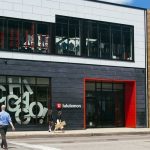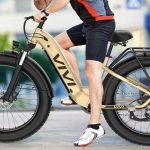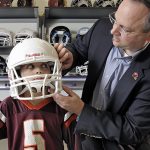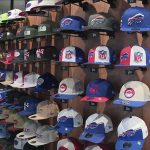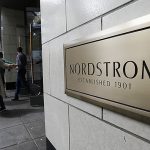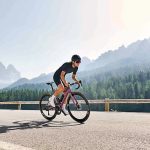The outdoor industry emerged leaner and more profitable at the end of last year than it was going into and during the 18-month recession that officially ended in June 2009, according to the first benchmarking reports published by Outdoor Industry Association.
The reports, which are based on 2010 financial data submitted by 61 manufacturing companies and 59 retailers, provide a unique look at how critical profit variables (CPV) have changed since OIA conducted its last studies based on 2008 data provided by retailers and 2007 data provided by manufacturers.
The manufacturing study breaks out median results for five categories of companies. Results cited for the Median Firm, for instance, represent the median of data reported by all 61 participating companies. In other words, 30 companies reported a number below that value and 30 reported an number above it.
The Median group turned out to have median annual sales of $9.6 million. The other manufacturing categories include: High-Profit with median sales of $4.6 million; Sales Under $5 million (small); Sales of $5-20 Million (mid-sized); and Sales of Over $20 Million (large). The report on retailers breaks out data for Typical and High-Profit retailers, which had median sales of $1.7 million and $900,400 respectively. The remaining categories were: Sales Under $1 Million (small); Sales of $1-$3 Million (mid-sized) and Sales Over $3 Million (large). The study identifies high-Profit firms as those with the highest pre-tax return on assets.
While the reports author cautions against making direct comparisons with prior studies because of the variance in the number and identity of respondents, the most recent studies indicate the industry has changed in the following ways:
Sales per employee: This number increased from 2006 for all but large manufacturers, who reported a 22 percent decline. The Median firm reported sales per employee rose 32 percent from 2006, while mid-sized firms reported a gain of 48 percent and small firms 11 percent . The figure remained essentially flat for the High-Profit firm at $372,742.
On the retail side, sales per employee were essentially unchanged for the Typical retailers group, but actually slipped about 4 percent for the High-Profit group. This likely reflects the larger number of small retailers reporting, which caused the sales for the High-Profit retailer group to decline from $1.9 million in 2008 to $900,400 in 2010. It also jibes with anecdotal reports from many independent specialty retailers, who have said they earned more profits in 2010 with less inventory and sales than in prior years.
Gross margin: This figure rose 130 points to 42.1 percent for the Median manufacturers, 410 points to 52.5 for High-Profit firms and 490 points to 47.4 percent for small firms, but declined by 200 points to 38.8 percent for mid-sized firms and by 10 points to 40.2 percent for large firms. This indicates that smaller firms made great strides in reducing their cost of goods sold since 2006 despite rising commodity, labor and transportation costs.
For the High-Profit retailer, gross margin reached 46.5 percent in 2010, or 320 basis points higher than for the Typical retailer, but still well behind the 49.8 percent reported for the small retailer group.
Operating expense percentage: This is the only ratio that improved across all manufacturing tiers with the greatest gains being made by the mid-sized group, which lowered the ratio 270 basis points to 33.5 percent of sales.
This ratio further separated the High-Profit retailers and demonstrates that while their edge begins with smart buying, it builds with shrewd cost management. The High-Profit group generated a median ratio of 36.3 percent of sales compared to 38.8 percent for Typical retailers, 42.0 percent for small retailers, 36.5 percent for mid-sized retailers and 41.0 percent for large retailers.
Inventory turnover: Despite a rash of cancellations in 2009, performance improved except at small firms, where turnover dropped 80 basis points to 3.4 times per year. Large firms showed the greatest improvement, boosting turnover from 2.5 to 3.0 times a year.
This statistic was relatively unchanged from 2008 for retailers at 2.0 turns per year.
Average collection period: Not surprisingly, this is the only CPV that deteriorated across all manufacturing companies. In 2010, it took the median company about 50 days to collect its accounts receivables, or about 2.5 days longer than in 2006. Large manufacturers went out 60 days, far longer than any other category.
A side-by-side comparison of the financial statements for the five retailer categories shows High-Profit firms earned 10.2 percent profits before taxes compared to 4.3 percent for Typical firms. That meant that even though they sold only half as much as the Typical retailer, these firms earned 22 percent more before taxes. This jibes with reports from many independent specialty retailers who said they were able to earn record profits in 2010 by going deeper on fewer SKUS to maximize discounts and preserve cash for close-out and other opportunistic buys. Indeed, High-Profit retailers had nearly twice as much cash and marketable securities on hand as a percentage of assets at the end of 2010 as Typical retailers, putting them in a much stronger open-to-buy position.
For further information, readers can access the full reports at OIAs website at www.OutdooriIndustry.org. The reports are free to all OIA members. Both OIA member and non-member companies that participate in OIA benchmarking studies receive the reports for free as well as a private report that compares their own results to industry norms and their peer group and includes suggestions on how to improve performance free of charge.
For further information, readers can access the full reports at OIAs website at www.OutdooriIndustry.org. The reports are free to all OIA members. Both OIA member and non-member companies that participate in OIA benchmarking studies receive the reports for free as well as a private report that compares their own results to industry norms and their peer group and includes suggestions on how to improve performance free of charge.
Non-participating non-members can buy the 32-page Retailer Benchmarking Report for $795 or the 60-page Manufacturer Benchmarking Report for $895.

